
"I visited Rabbi Jacob Raphael Saraval and he showed me books of the Karaites and Mishnayos with the commentaries of Bertinoro and Maimonides in Latin, with all their illustrations."
For some reason this interested the Chida. אין משיבין על המעשה. Recently all six volumes of this magnificent and interesting edition of the Mishnah became available digitally (link). I thought it would be interesting to discuss this edition, but first a little about the aforementioned Rabbi Jacob Raphael Saraval of Venice and Mantua (1708-1782).
Rabbi Saraval, a pupil of the famed Rabbi Yitzchak Lampronti (author of the rabbinical encyclopedia Pachad Yitzchak) was an erudite scholar, translator, poet and apologist. The meeting described above occurred in 1775, but the Chida must have met him as early as 1754, where he describes a eulogy he heard him deliver which must have been quite exhausting:

"During that week [2 Shevat 5514] Rabbi Jacob Saraval delivered a eulogy for the aforementioned Rabbi Gur [Aryeh Finzi] for three hours, in the vernacular; rhetorical and elevated speech."
Getting back to 1775, two weeks earlier (26 Tammuz) the Chida describes an earlier meeting at Rabbi Saraval's home, where he was shown a bible printed in Constantinople in 1505, important because it was printed by exiles from Spain. The Chida writes that it contained "new haftarahs (הפטרות חדשות)" whatever that's supposed to mean. On Tisha B'Av Rabbi Saraval mentioned the Chida from the pulpit in an honorable way (the Chida never fails to note when he was shown respect or its opposite; what can I say, he was human). He seems to have appreciated the nice words the Chida said about the community of Mantua, although he told his congregation that he's appreciate it if they'd learn to conduct themselves in holiness after the manner of Rabbi Menachem Azariah of Fano and Rabbi Moseh Zacut (a Mantuan rabbi who died in 1697).
In his youth, Rabbi Saraval collaborated with a fellow pupil of R. Lampronti, Rabbi Simcha Calimani on an Italian translation of Mishnah Avos (1729). Also of some interest is that Rabbi Saraval had a relationship with Benjamin Kennicott and evidently exchanged correspondence (perhaps they even met, as Saraval spent some time in England). He seems to have supplied Kennicott with at least two Hebrew Bible codices for his collation and you can read a little snippet of a quote from Saraval in his Dissertatio Generalis (1783) on the text of the Hebrew Bible (pp.508-09). Although my Latin is poor, (okay, almost non-existent) Kennicott quotes Saraval: "Varietatem lectionis, in msto magno numero reperiendam, ex consensu sum antiquis verzionibus diiudicandam esse" which means something like "Textual variants must be compared with the ancient Jewish versions" [Targums and the like].
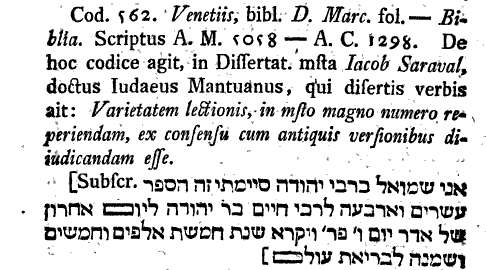
Here are two biographical entries about him:
Rabbi Marco Ghirondi's Toldos Gedolei Yisrael should come first as it is probably a source for the second one:

Shmuel Yoseph Fuenn's Knesset Yisrael:
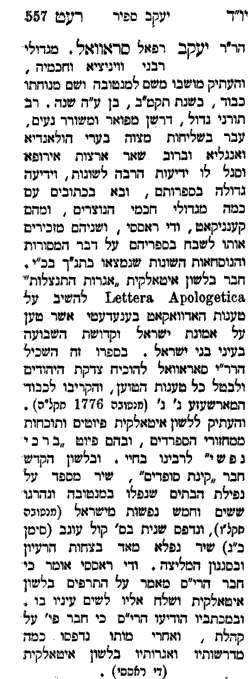
You can read some of his Hebrew poetry here in Shirman's anthology of Italian Hebrew poetry.
ETA 4.13.10:
Many thanks to my friend Dan Klein for sending me the following photographs of the 1732 Livorno edition of the Calimani/ Saraval translation of Pirkei Avos, which is a family heirloom:
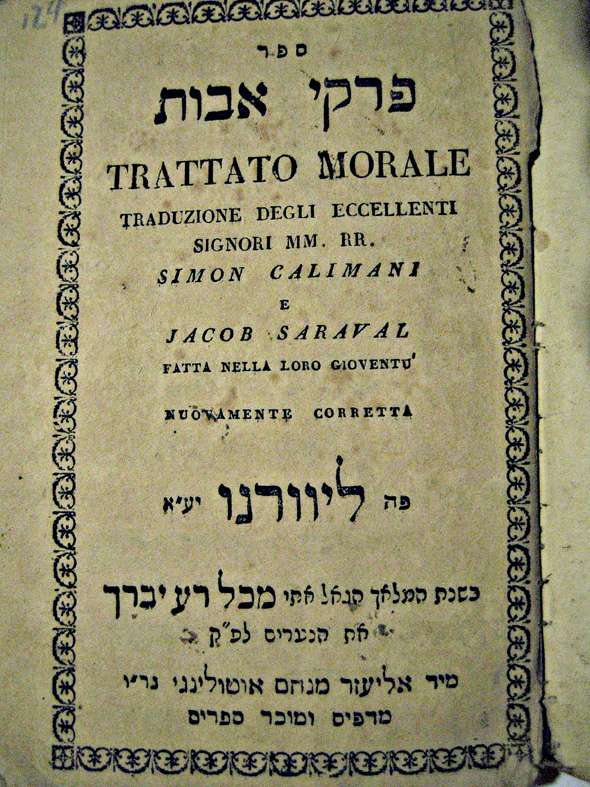


Dan, who's knows Italian very well, pointed out to me that it is strange that on the title page we are told that they translated it "fatto nella loro gioventu" which means "done in their youth." Since in 1732, which was only three years after the initial publication, our authors were all of 25 years old or so it seems strange to speak of their youth this way. Although it is possible that it's just strange language and they were still in their youth, my reply to Dan was that it's possible they could have done it when they were 13 or 14, which would make sense of "in their youth," even though we are accustomed to thinking of 22 year olds as youths. Translation seems to have been a big aspect of Hebrew study in Italy, so it would make sense as a very youthful exercise. In addition, this was still the era before delayed adulthood, even recognizing that 21-22 could also have been considered "youths" back then. But remember, the Ramchal was a seasoned author and teacher by his early 20s, and they were roughly the same age.
* * *
If someone is still reading, it's time for the Surenhuys Mishnah. Willem Surenhuys (1664-1729) was a Dutch Hebraist who made a major contribution to Christian Hebrew studies in producing an exceptional work, the 63 tractates of the Mishnah in Latin, along with the commentaries of Rabbi Ovadiah Bertinoro and the Rambam, and their introductions. To put that into perspective, with so much contemporary Jewish translation projects, has anyone even imagined not only translating the Mishnah, appending useful notes, but also translating the perushim of the Bertinoro and the Rambam, not to mention an impressive Hebrew index? No small achievement. The truth is that many tractates already existed in Latin translation. In fact Surenhuys used the existing translation of 26 of the 63 tractates, which itself is interesting; that is, to know that before 1698 26 tractates of the Mishnah were already translated into Latin.
While most Christian scholars of Hebrew had an interest in knowing what was in the rabbinic writings, Surenhuys (and those who followed him, such as William Wotton of England who translated Massekhtos Shabbos and Eruvin into English) had a particular interest in the Mishnah. His fervent belief was that the Mishnah is special, because it records the true traditions of the Jews! While most Christian Hebraists doubted, to put it mildly, that there was any credibility to the Jewish claim to possess a true oral Torah, Surenhuys did not see why this was not possible. He knew that the Mishnah was only a little later than the time of Jesus, thus it was probably a fair description of Judaism in the time of Jesus. Why shouldn't the Mishnah reliably describe, for example, Temple practice? This in turn sheds much light on the Bible. In addition, why shouldn't the Mishnah shed an enormous amount of light on the Judaism of the 1st century, when Jesus lived? For example, the order on marriage and related laws, Nashim, should be a treasure trove of information on authentic Jewish marriage practice, which could explain a great deal about the Gospels (eg, Jewish betrothal was relevant to the relationship between Joseph and Mary). But his interest was not purely scholarly. He also believed that the Mishnah could serve as a common link between Jews and Christians, since the Mishnah could be used to show the fulfillment of the Old Testament in the New.
Below follows an explanation of how Surenhuys came to this opinion, and then a review of this edition of the Mishnah from 1722, by Michel de la Roche (1680-1742) a French Huguenot who settled in England, and was the author of the series Memoirs of Literature, in which he presented the scholarly literature of the day that he had read to the public. Roche was very interested in and sympathetic to the ideas propounded by Surenhuys:

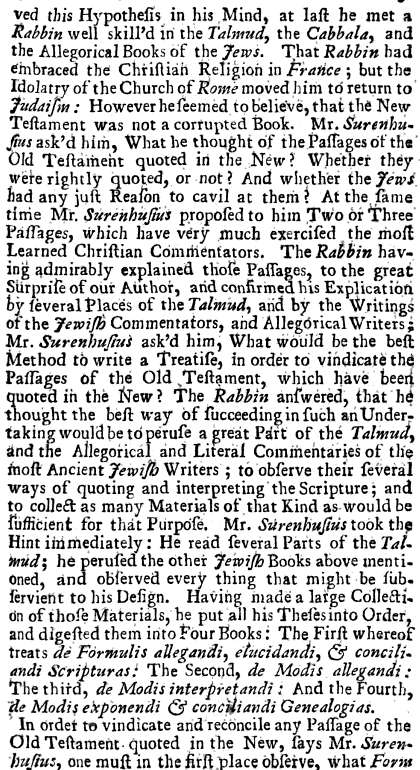

The review:
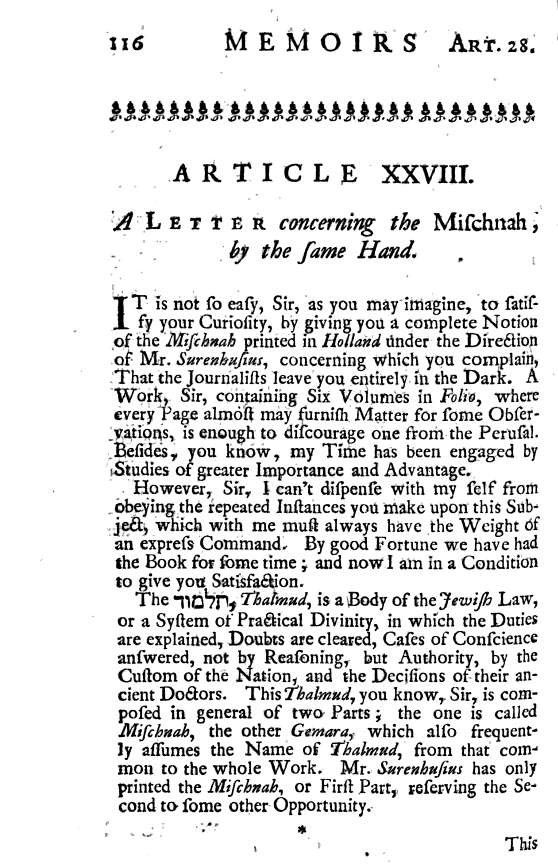
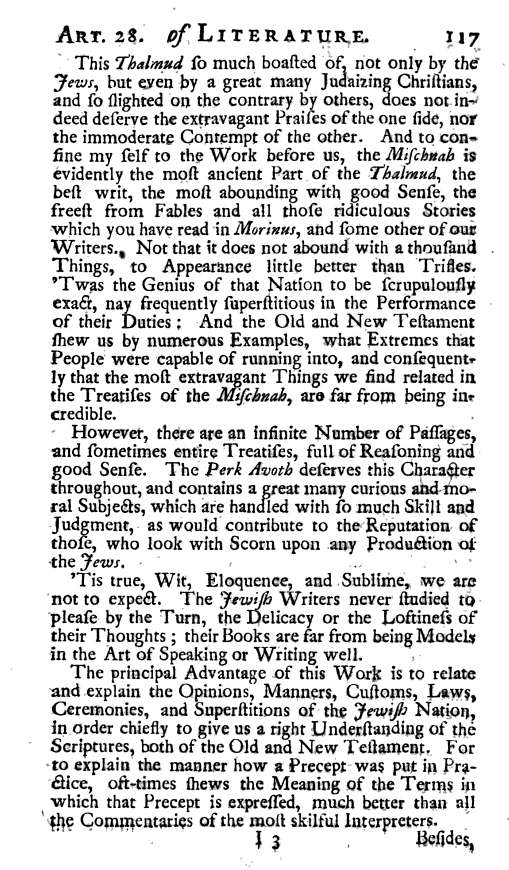

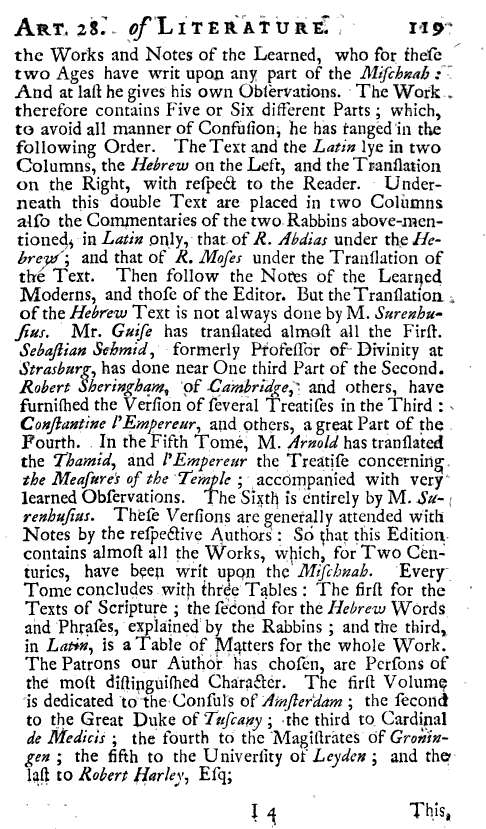
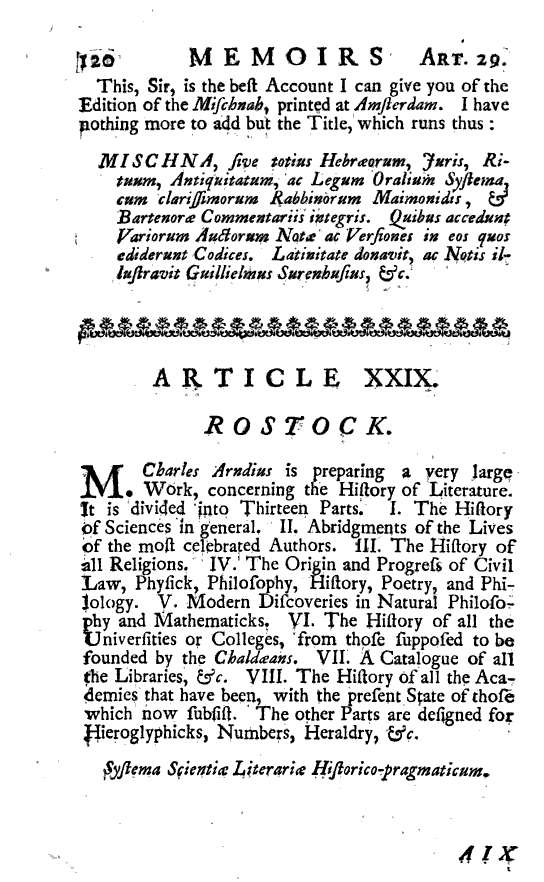
On to the edition itself. I will post the title page of two volume, a sample of what it looks like inside and then some of the interesting illustrations (which the Chida refers to) found throughout.
Note: these illustrations are only in the first three volumes, and were created and supplied by Jews, who had warmly supported the project. They are thanked and recognized in the introduction. This is especially interesting because, for example, when you look at the illustrations of sukkot you are looking at sukkot as known and imagined by actual late 17th century Jews. The reason why the later volumes lack illustrations is due to the death of Rabbi Isaac Coenraads of the German Synagogue in Amsterdam, who had been mainly responsible for supplying them.
Title page:

Fairly typical pages from Vol. I:


Illustrations from Vol. I:

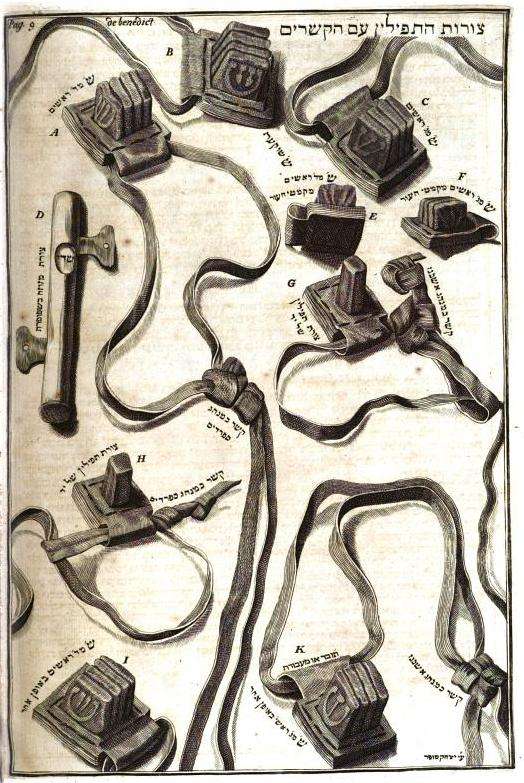
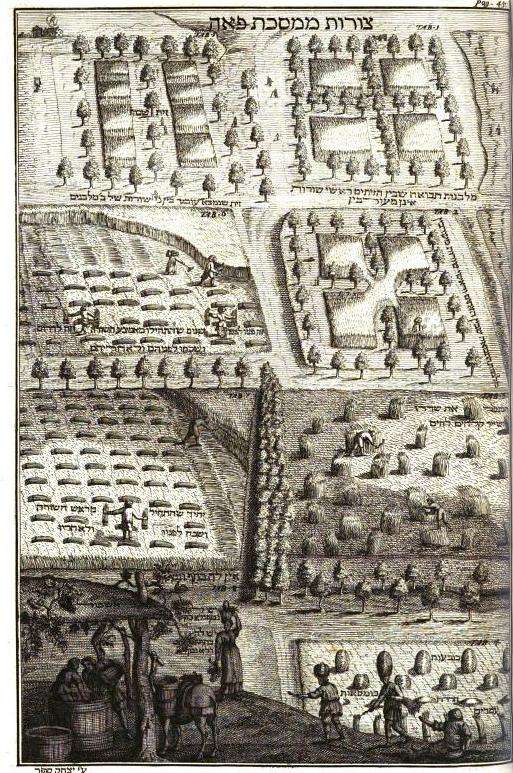
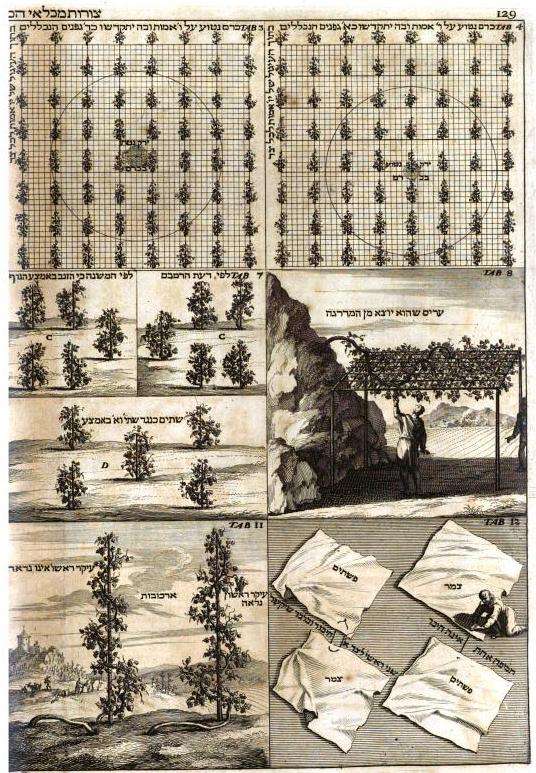

The impressive index:
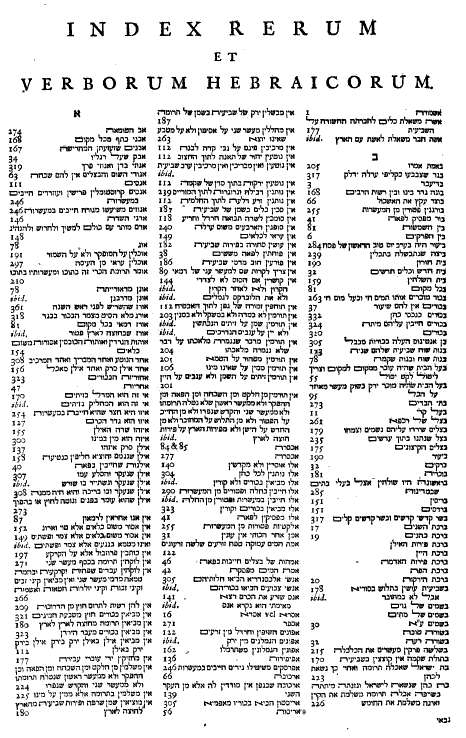
Illustrations from Vol. II:
Title page. Only in the second volume is the Hebrew title given:
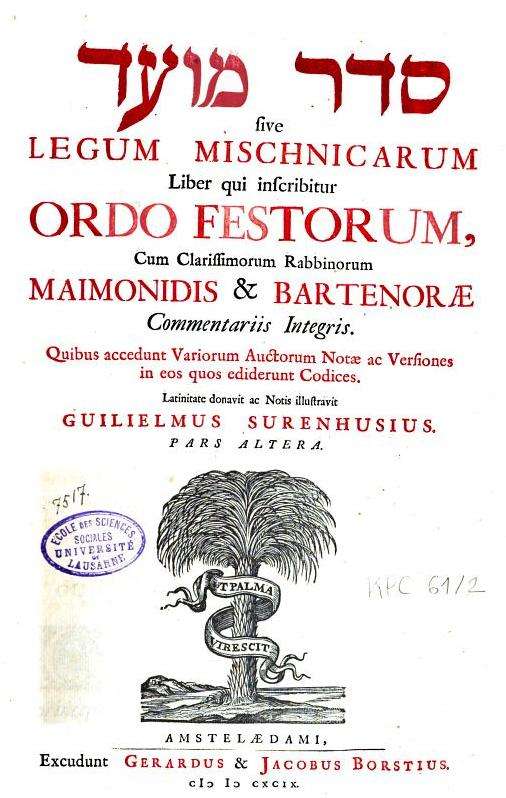
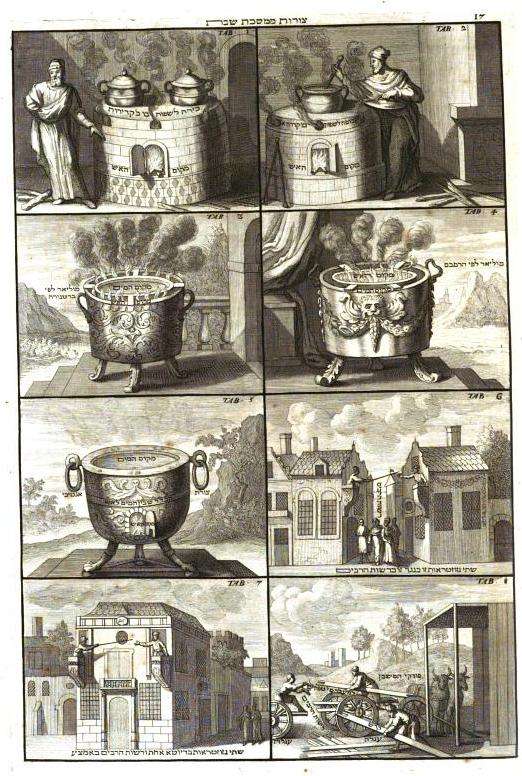

Illustrations from Vol. III:
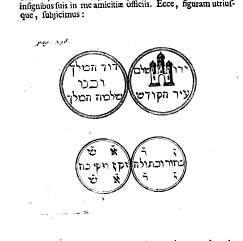
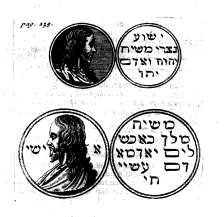
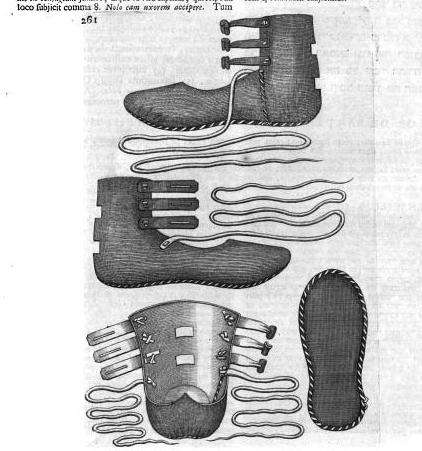
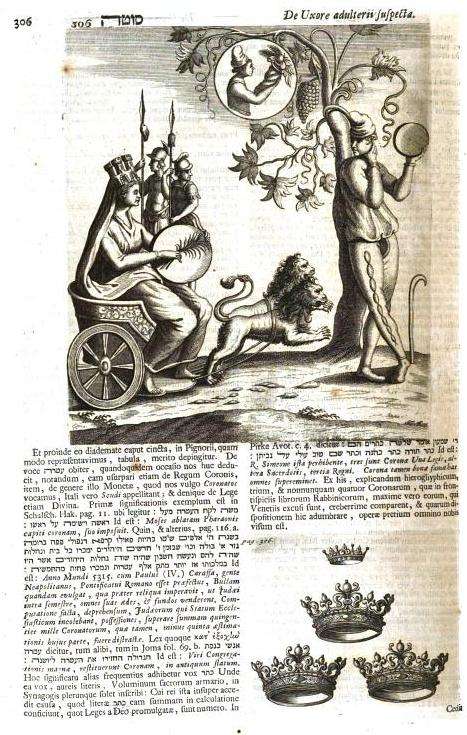

Although the introduction to the 6th and final volume ended with a prayer hoping that his translation may help lead the Jews to Jesus, he is in the judgment of Peter van Rooden "quite probably . . . the most philosemitic Christian Hebraist of the seventeeth century." As Rooden points out, unlike basically all other Hebraists, he wished to keep theological polemics against Judaism separate from rabbinic scholarship. He himself never engaged in polemics, and took other scholars to task for their use of rabbinic literature to combat Judaism, which they only possessed because of Jewish teachers. The first volume is dedicated to the Burgomasters of Amsterdam, and he specially cites their humane treatment of the Jews as a reason for their deserving praise. In addition, throughout the translation and commentary he depends and relies upon the Jewish interpretation of the Mishnah, aided by Maimonides and Bertinoro. He avoids historical and theological criticism; he tries, in a word, to present the Mishnah as it is.
A final note: this is not really the first complete Mishnah translation. A Jew, Isaac Abendena, brother to the Haham of London at the time, translated the entire Mishnah into Latin, but it remained in manuscript in Cambridge University (Surenhuys had access to it and made use of it). Supposedly his brother had first translated the Mishnah into Spanish, but we'll leave that for another post.





Fascinating. The first bio mentions that R. Saraval was a member of Napoleon's Sanhedrin. The second one leaves it out. Any ideas why?
ReplyDeleteHa! It's a very embarassing mistake. Often when a little text begins at the end of one page and continues on to the next I just combine them for one easy image. I did that here, as his bio appears on two pages in Ghirondi, and boy did I mess up! (I combined the wrong images to produce this mamzer.)
ReplyDeleteThis is Rabbi Wein's revenge, vhm"y. Will fix it. LOL
Further clarification: I combined the first part of entry 216 -- Saraval -- with 217, Rabbi Yehoshua Segre, who was indeed in the Sanhedrin.
ReplyDeleteOf note: in Rabbi Ghirondi's early-mid-19th century Italy there was a Hebrew number יו, sixteen (but not י"ה for fifteen!).
Check again in a minute and the correct fake image will be there!
No one can say that S. took the money and ran.
ReplyDeleteThanks Andy.
ReplyDeletePuts most modern picture mishnayos to shame. A real piece of art.
ReplyDeleteAnd the scholarship. I'm sure someone can tear it apart by finding its weak spots ala the review that a certain rabbi did of the Steinsaltz Talmud in Tradition, but come on. It's impressive. As for the art, look at the shadows on those tefillin. It's gorgeous.
ReplyDeleteI bet it wasn't cheap. When I get the chance I'll see if I can find what it was selling for.
the Chida never fails to note when he was shown respect or its opposite; what can I say, he was human
ReplyDeleteWithout commenting on the substance of the putative proof, I wish to ask why would you ignore this:
[פאריס כח כסלו תקלח]
וחסדי ה' אזכיר שיש לי שם גדול וכבוד ומחשבים אותי מאה חלקים על מה שאני יודע וכבר אני אומר להם כי בער אנכי והם סוברים שהוא רק מצד הענווה. גם בין הגוים יצא שמי והם שואלים ליהודים עלי והוא דבר פלא. ומה שאני מדבר אליהם סוברים שהם דברים יקרים מפנינים והן הן גבורותיו מאשפות ירים אביון להשיבו עם נדיבים.
See here.
See also here and here.
Assuming that "[t]he Chida didn't write it (it seems) for publication", how do you explain the Chida (or conversely, yourself)?
The Tefillin Shel Yad looks very similar to another one you posted a while ago.
ReplyDeleteThe Shel Yad box is conical, not square like what we wear in our times.
I have the luck to own a copy of the Saraval-Calimani translation of Pirkei Avot. For some reason it had been among my Hungarian grandfather's seforim. The date given on the title page is 5592, or 1732. I get a kick out of some of the translations: "beit va'ad la-hakhamim" is "Accademia de' savii," and "Ha-Kadosh Barukh Hu" is "il Santo Benedetto Signore."
ReplyDeleteThanks for this.
ReplyDeleteCan I assume that you are quoting Peter van Rooden from this volume and this article?
Schäfer, Peter und Irina Wandrey (Hrsg.):
Reuchlin und seine Erben. Forscher, Denker, Ideologen und Spinner. Pforzheimer Reuchlinschriften.
Ostfildern : Thorbecke, 2005. 348 S. Gebundene Ausgabe mit Schutzumschlag. ISBN: 3799559817 (EAN: 9783799559812 / 978-3799559812)
Klaus Reichert, Die zwei Gesichter des Johannes Reuchlin -- Stephen Burnett, "Spokesmen for Judaism": Medieval Jewish Polemicists and their Christian Readers in the Reformation Era -- Jean-Pierre Brach, Outlines and Motivations of Guillaume Postel`s Interest in Jewish Language -- Saverio Campanini, Wege in die Stadt der Bücher. Ein Beitrag zur Geschichte der hebräischen Bibliographie: die katholische bibliographische "Dynastie" Iona - Bartolocci -Imbonati -- Hartmut Bobzin, Der Altdorfer Gelehrte Johann Christoph Wagenseil und seine Bibliothek -- Peter van Rooden, Willem Surenhuys` Translation of the Mishna and the Strange Death of Christian Hebraism -- Günter Stemberger, Die Mishna-Übersetzung von Johann Jacob Rabe -- Adam Sutcliffe, Judaism in the Era of Enlightenment: the Eighteenth-Century Forging of a Turbulent Relationship -- WouterJ. Hanegraaff, Emanuel Swedenborg, the Jews, and Jewish Tradition -- Gunnar Och, Judenbilder der Romantik -- Stefan Rohrbacher, "Gründlicher und Wahrhaffter Bericht". Des Orientalisten Johann Andreas Eisenmengers Entdecktes Judenthum (1700) als Klassiker des "wissenschaftlichen" Antisemitismus -- Peter Schäfer, "Adversus cabbalam" oder: Heinrich Graetz und die jüdische Mystik -- Klaus Herrmann, Das Reuchlin-Bild bei Ludwig Geiger -- Christian Wiese, "Das beste Gegengift gegen den Judenhaß"? Wissenschaft des Judentums, protestantische Bibelkritik und Antisemitismus vor der Shoah -- Henry Wassermann, Prof. Dr. Hugo Gressmann (1927): ". ich bitte endlich, diese Gastvorlesungen auch als eine Anerkennung der jüdischen Wissenschaft zu betrachten" -- Martin Engelbrecht, Die eigenen Wurzeln neu pflanzen - was Christen in Deutschland derzeit am Judentum interessiert -- Christine Meilicke, Abulafianism among the Counterculture Kabbalists -- Gabriele Werner, Madonna und die Kabbala - zwischen Zivilreligion und Identitätspolitik. ISBN 3799559817
1. The Mishna is the second law?! I guess everyone makes mistakes.
ReplyDelete2. That was some muliar! Love the face.
3. The coins! Somehow I think those coins were not illustrated by Jews.
Bar Uryan
ReplyDelete>Without commenting on the substance of the putative proof, I wish to ask why would you ignore this:
I have nothing to explain. Evidently you're accusing me of accusing him of being arrogant, but I have done no such thing. I wrote that he never fails to note when he was shown respect or its opposite; which is true. "What can I say, he was human" was not meant as a slight, but rather my explanation why he deemed such things worthy of recording. All the more so if it was for his private use and memories.
As for whether or not the Chida meant it for publication, I guess that's ultimately a matter of opinion, since he is unclear about it. I suppose it's possible he had a plan of revising it for publication, but as it stands now the manuscript seems very far from ready for that. It's fragmentary, some years he only recorded a few brief notes, etc.
Shloimie
All the more interesting because this was drawn by a Jew.
Dan, thanks for the beautiful pictures. I'm going to add them to the post.
John
Thanks for the kind words. Although I did use that article by van Rooden,I derived more substance from his article "The Amsterdam Translation of the Mishnah," p. 257 in William Horbury (editor), Hebrew Study from Ezra to Ben-Yehuda (1999), which is, I think, an English translation of an earlier article in Dutch. Van Rooden's articles can be downloaded here.
JXG
Yes, everyone makes mistakes. In his defense, he understood "mishnah" in the sense of "mishneh torah" or deuteronomy. Actually, I find this confusion interesting, because in reality the T of Torah should be rafeh, thus for Ashkenazim the Rambam's magnum opus should be pronounced "Mishneh Sorah."
As for the coins, while these probably weren't drawn by Jews (wonder what the Chida thought of Jesus coins in the Mishnah) see here for the very same coin drawn by a Jew, albeit about 150 years lat
whose the yitschok sofer who created these awsome drawings
ReplyDeleteany info
Thanks for posting my Calimani/Saraval Pirkei Avos photos. Your theory that the authors may have produced the work in their teens makes sense to me; Shadal was another Italian Jew who got an early start, with his first efforts at parshanut at the age of 11 or 12.
ReplyDeleteI included a photo of the doodlings on the endpapers to show that the little book (about 6" by 4", approx. 88 pages) was in use in 1856, and that human nature hasn't changed much since.
Great post! I noticed the interesting construction of the mezuzah. The location of the nail-holes implies that it was installed at an angle, just like we do it. -- Phil
ReplyDelete